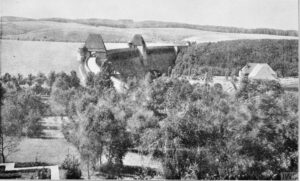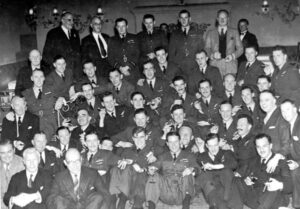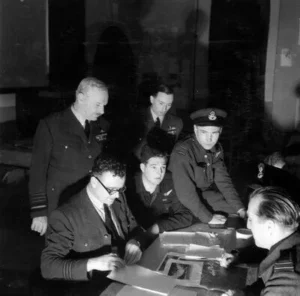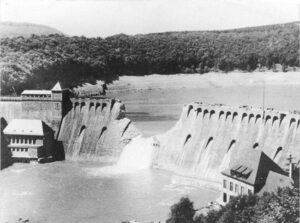This #ForgottenFriday is dedicated to the last surviving Dambuster, Squadron Leader George “Johnny” Johnson who sadly passed yesterday.
We’re re-telling the incredible story of the Dambusters Raid on the night of 16th-17th May 1943.
On the night of 16th May 1943, Wing Commander Guy Gibson led 617 Squadron of the Royal Air Force on an audacious bombing raid to destroy three dams in the Ruhr valley, the industrial heartland of Germany. The mission was codenamed Operation ‘Chastise’. The dams were fiercely protected. Torpedo nets in the water stopped underwater attacks and anti-aircraft guns defended them against enemy bombers.
But 617 Squadron had a secret weapon: the ‘bouncing bomb’.

The Targets
The Möhne dam in Germany’s Ruhr valley secured the water supply for much of the surrounding area. Water from its reservoir was also used to generate electricity. It was thought that destruction of this dam and others in the region would cause massive disruption to German war production. Plans for an attack on the dams had first been considered in 1937, but it took until 1942 to develop a weapon capable of destroying the dams – and the aircraft to deliver it.

The Ingenuity
In 1942 British engineer Barnes Wallis began working on plans for a bomb that could skip across water. He developed the idea by experimenting with bouncing marbles across a water tub in his back garden. Wallis thought the new weapon could be used to attack moored battleships, but research soon focused on using it against the dams that were vital to German industry.

Test Run
The Admiralty and the RAF carried out extensive tests at sites around the country. These revealed that the drum-shaped bomb (codenamed ‘Upkeep’) needed to be dropped from a height of 60 feet (18m), and at a ground speed of 232mph. The bomb would spin backwards across the surface of the water before reaching the dam. Its residual spin would then drive the bomb down the wall of the dam before exploding at its base. All that was needed now was men to fly specially modified Lancaster bombers which would carry the ‘Upkeep’.

The Squadron
In late March 1943, 617 Squadron was formed at Scampton in Lincolnshire, with 24-year old Wing Commander Guy Gibson as its commander. Some of the men for 617 were hand-picked by Gibson but many were crews who had simply come to the end of their tours, or were due to start their second tours. They were from Britain, Canada, Australia, New Zealand and the USA. Gibson had to assemble his aircrews and all the ground staff and auxiliary support needed in just three weeks.
There were just eight weeks of intensive low-level training and technical preparation before the raid. Nobody in the squadron except for its most senior members was aware of the targets until the briefing on the day of the raid itself.
Nonetheless, security was extremely tight and the aircrew were instructed to tell nobody about what they were doing. They were ready for Operation ‘Chastise’.

The Raid
After being briefed, the aircraft set off in three waves on the evening of May 16, each wave targeting a different dam. The Möhne and the Eder were both successfully breached, while the Sorpe was damaged but not destroyed. However, the cost to 617 Squadron was significant.
Of the 19 crews that had set out on the raid, eight did not return. In total, 53 men were killed and three more were presumed dead though it was later discovered that they had been taken prisoner and spent the rest of the war in POW camps.

The Reaction
Air Vice Marshal Cochrane, Group Commander of 5 Group, sent a message to Gibson:
“The disaster which you have inflicted on the German war machine was a result of hard work, discipline and courage. The determination not to be beaten in the task and getting the bombs exactly on the aiming point in spite of opposition have set an example others will be proud to follow.”
The press also reported the operation as a great success, though for many involved in the raid, and particularly Barnes Wallis, this was severely tempered by the loss of life in 617 Squadron. Wallis wrote that: “For me the subsequent success [of the raid] was almost completely blotted out by the sense of loss of those wonderful young lives.”
https://www.iwm.org.uk/history/the-incredible-story-of-the-dambusters-raid (To read more)


